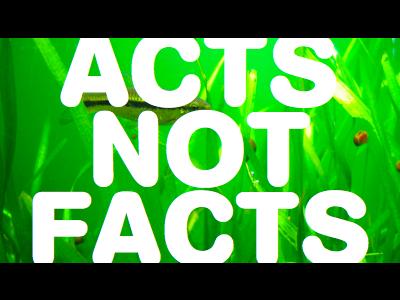
ACTS NOT FACTS.
A trap that’s really easy to fall into with technology is the idea of representation: that the technology is passively representing some data or information that might be elsewhere in the world. You see this with umbrellas that glow or, yeah, puppets that stand up.
The objects that we, designers, make: they don’t just reflect back on the world. They don’t just represent it, or map it. Technologists, especially, are very into maps and indexes.
But maps exert a force on the world. By mapping something, you always change it, just as building the Earl’s Court tube station in London created an area that wasn’t there before, and made certain people a lot of money.
So when I’m thinking about how to develop Availabot, the stand-up puppet from earlier, I try to remember that primarily it’s an act not a fact. I try to remember that it has a place in the social world. It’s primarily a gift, or something that’ll change a relationship between two people, or something bought with scarce pocket money to demonstrate a commitment to talking more… it’s not a representation of somebody’s availability at all.
Every fact, once revealed by technology to be a fact, is an act itself and an act in waiting. How objects participate in the world – actually, how we engage them to be in our world – is more interesting than what they show or how they do it, and so we should build objects so that we can engage them, and not for novelty or critique or whatever.
I find challenging myself with this motto more useful, at the moment, than drawing inspiration from any given design project. And I know it’s obvious to a lot of people – actually to most people in this room – but it’s a particular weakness I find in myself.
So I’m very bad at this still, but I’m trying to avoid the language of representation when I talk about my work. I’m really not very good at it.